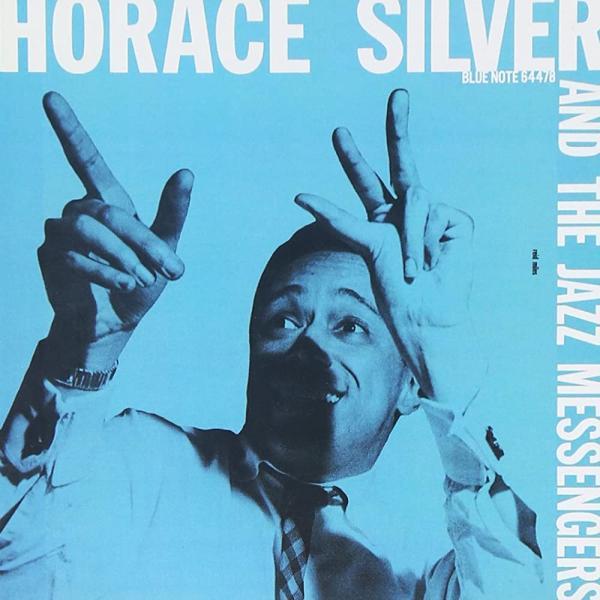


Horace Silver and The Jazz Messengers
Album #2 - July 1956
Episode date - March 29, 2023
The long-player format did not initially start out exclusively as the twelve-inch album. At first, the slow-revolving format stuck to ten-inch records, which could hold about twelve minutes of music per side. This was still a great advantage over 78s, and so lot of ‘albums’ from 1951-1954 were released as ten-inch records – what we later would refer to as an ‘extended play’ or EP.
Blue Note is one of the labels that initially released 10” LPs, and Horace Silver was signed to them. Blue Note released two 10” long players under his name in 1954-55, but the label quickly recognized the commercial appeal of full-length albums, so they combined the two releases together on one 12” album. In the interim, his band formalized their relationship as a jazz collective and decided to call themselves The Jazz Messengers, thus providing a new band name, both for the album title and for the jazz scene in general. Silver played piano and wrote almost all of the material, while Kenny Dorham and Hank Mobley exchanged solos on trumpet and tenor saxophone, respectively. Doug Watkins played a strong rhythmic bass, which was essential because Art Blakey played his drums with forceful precision.
In the mid-fifties, most jazz was an individualistic enterprise, with albums based around one musician, but the Jazz Messengers were a genuine collective. Just a casual listen to the songs here displays a real sense of teamwork and camaraderie among the players. Blakey’s physical style provides bedrock for airtight rhythmic structures that suggest the discipline of big band arrangements, mostly the product of Silver’s shifting piano patterns. Silver wrote every song here but one (“Hankerin’”, written by Hank Mobley), and it makes for fun listening to hear the trumpet and saxophone moving with graceful freedom while Silver locks in with the rhythm section and pins things down with distinctive and deliberate rhythmic arrangements. Most hard-bop jazz from this era goes by in a blur, but the Jazz Messengers are a measured outfit, relying on form, fit and function. “Doodlin’” is a simple twelve-bar arrangement but the riff makes it memorable, along with Silver’s subtle shifts in rhythm, which is surely the reason Ray Charles would choose to cover it. “The Preacher” represented an exercise in old-school jazz-blues that stood out in the 1950’s jazz scene because it looked back while everyone else was racing for the stars, and yet it still swings like a bebop number nonetheless. How many jazz albums can claim to contain two classic original recordings?
After one more album, Silver would leave the Messengers for a solo career, leaving Art Blakey to take charge of one of the best and longest running finishing schools in the history of jazz. Dozens, maybe hundreds of musicians joined Art Blakey’s Jazz Messengers at one time or another, many moving on to greatness, including Lee Morgan, Wayne Shorter, Keith Jarrett, Branford and Wynton Marsalis, Chuck Mangione, Terence Blanchard and Freddie Hubbard, to name just a few. “Horace Silver and the Jazz Messengers” represents the first incarnation in what would become one of the most consistently changing (and challenging) jazz outfits of all time.
Featured Tracks:
Room 608
Creepin' In
Stop Time
To Whom It May Concern
Hippy
The Preacher
Hankerin'
Doodlin'
July 1956 – Billboard Did Not Chart
Related Shows













